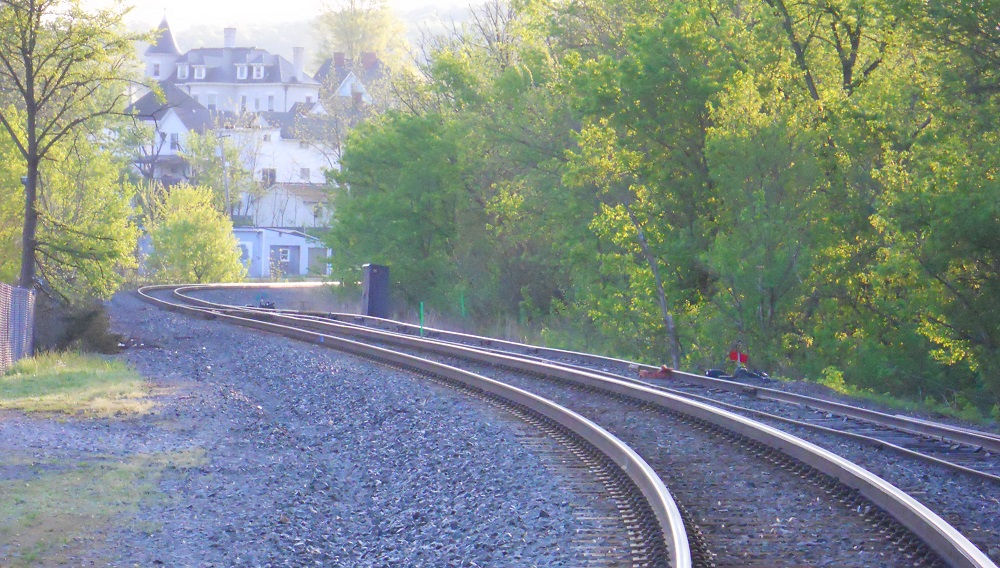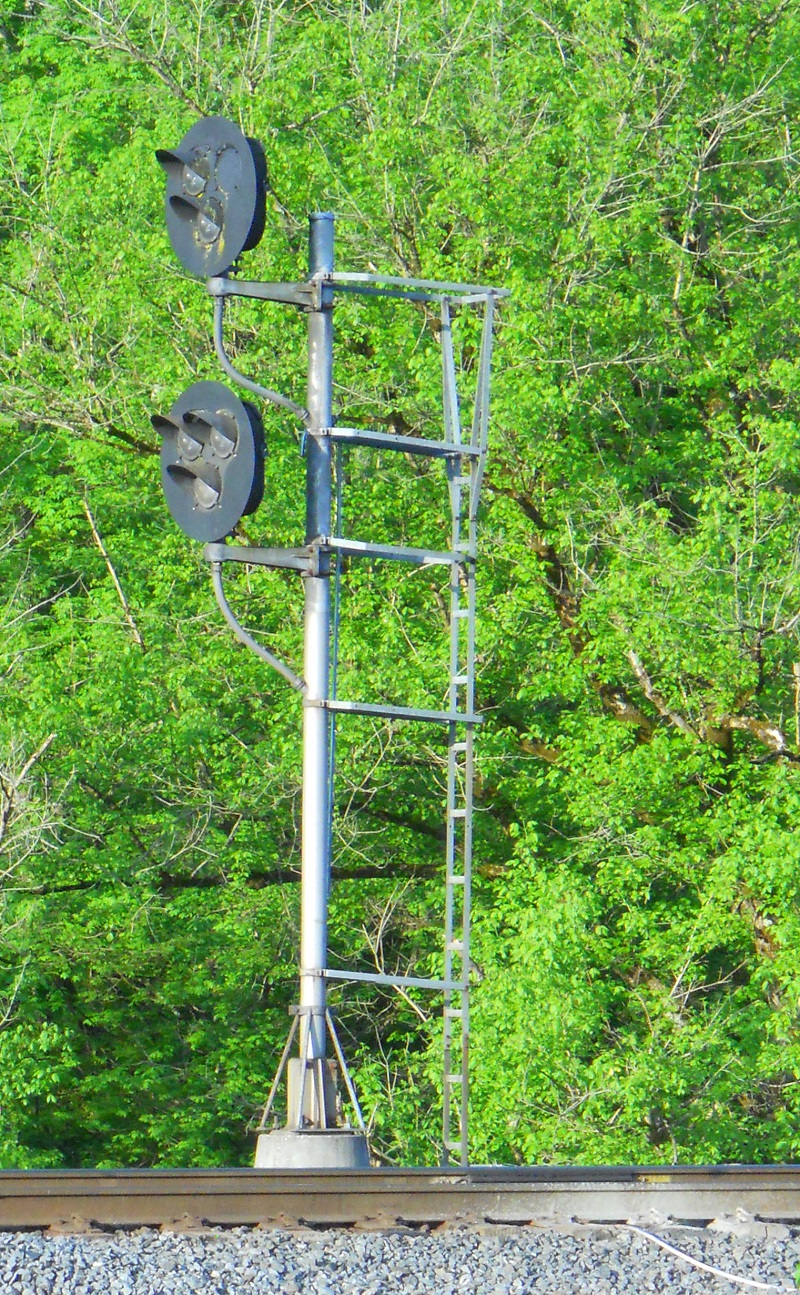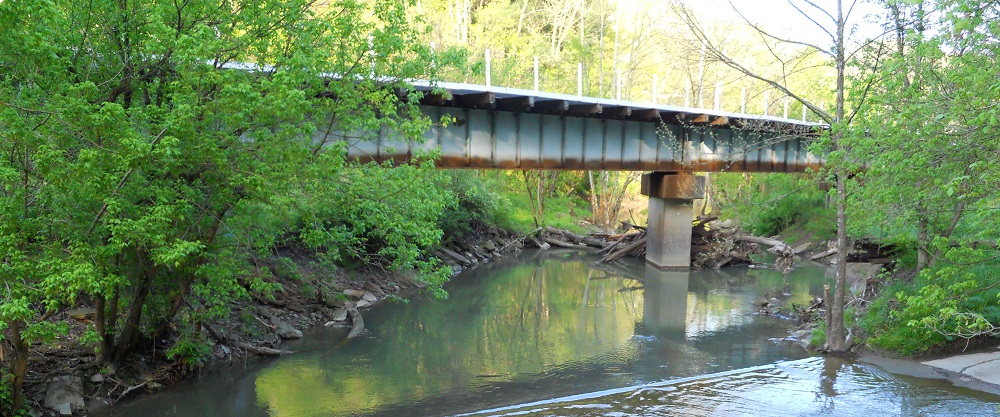On Sheet – Recon mission
On Sheet – Recon mission
 wo weeks ago, I left you all for my pilgrimage-slash-recon mission to Waynesburg, Pennsylvania as detailed HERE. This was an interesting yet backward way to do things – rather than pick an actual place to model, I picked a fictitious place and then based it (oh, very loosely) on an actual place.
wo weeks ago, I left you all for my pilgrimage-slash-recon mission to Waynesburg, Pennsylvania as detailed HERE. This was an interesting yet backward way to do things – rather than pick an actual place to model, I picked a fictitious place and then based it (oh, very loosely) on an actual place.
I know that in the 60’s (when I model) the place had a number of industrial sidings and even as small three-track yard just west of town (possibly a coal marshaling area). But I didn’t know what how steep the hills where, or the colors of the rocks (mine were brown with india ink shadowing). So I swung up to Columbus to pay my respects to my father’s grave, then bombed east along I-70 to Washington, PA, where I swung south. Got a room in an interstate hotel just east of Waynesburg and looked forward to a full day of rail-fanning.
Well, there are no industrial sidings at all (unless you count the MOW spur just east and an equipment siding near the NS office). I could see where sidings were – some of them even had old dumps (for coal from smaller mines perhaps?). I got an early start (since the hotel messed up my wake-up call and rang me at 6pm). So out I went to check it out in the early morning.

The east approach into Waynesburg. The town has a lot of old gingerbread houses, harking back to the heyday of coal. Instead of the Tuscarora passing siding, there is little more than an MOW spur.

No old Pennsy seven-bulb signals but these more modern ones. Later I noticed that this stand was lit. I should have realized a coal train was rumbling inbound.
The tracks (as shown in my prior report) run along the south side of the town, treading between the instrustrial strip (mostly Jacob’s Petroleum, without the siding it had/I have in the 1960s). There are some ratty industrial structures and evidence of the freight sidings all along there. But really, it was all packed in a couple of hundred yards. I snapped a bunch of pictures, drove about the north side of the tracks, crossed at a grade crossing and realized I was in a MOW dump (a couple of scrap gondolas, piles of tie plates and rusting rails, that sort of thing). Within an hour, I was done. All that remained was to have an NS guy come out of the yard office and ask me what I was doing. Man, he was so big and burly, he looked like Bluto. I just yes-sired and no-sired, playing the rail nerd and being very cooperative. He gave me a long look and an “Okaaaay” – I got the rest of my photos and bugged out west.
Outside of town to the west, the rails diverge down different narrow river valleys, one due west (hitting a number of coal mines), one swinging NNW and running towards Pittsburgh. I followed the mine-line for a bit but didn’t see any of them (I believe the coal mines hide themselves like nuclear launch pads these days). The run up the interchange route gave me a good look at the cliffs, the hills and the river I wish to model.
But it was an interesting trip. Even if you are pulling a place out of your arse, you need to at least visit the rough area you envision to get an idea of the layout and the place. For example, well out of town, I walked along a service road and stood in the middle of the tracks at the grade crossing (no NS musclemen here). I noticed the darker asphalt of the grade crossing (it was a nice touch). And the rust dusting between the rails – easy to do. The bridges were not like I model, but then again, my era was sixty years ago. The cliff faces I got dead on and my hill profiles was pretty close, too.
I drove back into down, thinking about what I’d seen. As I went down the divided main street, I heard the squeal of wheels and the blat of a horn. Yes, an empty coal string was rumbling west through town, heading towards the nearby mines. I managed to race down to a dead-end street where I shot a quick video of the tail end of the train leaving town.
All in all, it was a very successful trip. I saw what I needed to see, and understood what I needed to comprehend.

Bridges aren’t quite what I have, but now I have ideas for my rivers.
